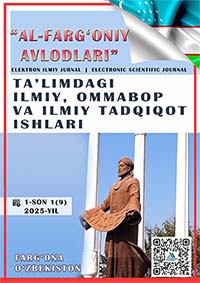DEEPFAKE TECHNOLOGY: THREAT LANDSCAPE, DETECTION TECHNIQUES, AND ETHICAL GOVERNANCE
Keywords:
: Deepfake, Generative Adversarial Networks (GANs), Cybersecurity, Deepfake Detection.Abstract
Deepfake technology, driven by advancements in artificial intelligence (AI) and deep learning, facilitates the creation of hyper-realistic synthetic media—encompassing images, videos, and audio. While this innovation holds promise in fields such as entertainment, education, and digital accessibility, it simultaneously poses significant threats, including misinformation dissemination, identity theft, and cybersecurity vulnerabilities. The accelerating sophistication of deepfake generation methods underscores the urgent need for effective detection techniques and comprehensive regulatory responses. This paper explores the fundamental principles underlying deepfake creation, evaluates its associated risks, examines state-of-the-art detection strategies, and discusses future directions for promoting the ethical and secure application of deepfake technology.
References
References
Afchar, D., Nozick, V., Yamagishi, J., & Echizen, I. (2018). MesoNet: A Compact Facial Video Forgery Detection Network. 2018 IEEE International Workshop on Information Forensics and Security (WIFS), 1–7. https://doi.org/10.1109/WIFS.2018.8630761
Choi, Y., Choi, M., Kim, M., Ha, J. W., Kim, S., & Choo, J. (2018). StarGAN: Unified Generative Adversarial Networks for Multi-domain Image-to-Image Translation. Proceedings of the IEEE Conference on Computer Vision and Pattern Recognition (CVPR), 8789–8797. https://doi.org/10.1109/CVPR.2018.00916
Ciftci, U. A., Demir, I., & Yin, L. (2020). FakeCatcher: Detection of Synthetic Portrait Videos Using Biological Signals. IEEE Transactions on Pattern Analysis and Machine Intelligence. https://doi.org/10.1109/TPAMI.2020.3012035
Goodfellow, I., Pouget-Abadie, J., Mirza, M., Xu, B., Warde-Farley, D., Ozair, S., Courville, A., & Bengio, Y. (2014). Generative Adversarial Nets. Advances in Neural Information Processing Systems (NeurIPS), 27.
Karras, T., Laine, S., & Aila, T. (2019). A Style-Based Generator Architecture for Generative Adversarial Networks. Proceedings of the IEEE/CVF Conference on Computer Vision and Pattern Recognition (CVPR), 4401–4410. https://doi.org/10.1109/CVPR.2019.00453
Kingma, D. P., & Welling, M. (2014). Auto-Encoding Variational Bayes. International Conference on Learning Representations (ICLR). https://arxiv.org/abs/1312.6114
Li, Y., Chang, M. C., & Lyu, S. (2018). In Ictu Oculi: Exposing AI Generated Fake Face Videos by Detecting Eye Blinking. 2018 IEEE International Workshop on Information Forensics and Security (WIFS), 1–7. https://doi.org/10.1109/WIFS.2018.8630761
Mirsky, Y., & Lee, W. (2021). The Creation and Detection of Deepfakes: A Survey. ACM Computing Surveys (CSUR), 54(1), 1–41. https://doi.org/10.1145/3390096
Verdoliva, L. (2020). Media Forensics and DeepFakes: An Overview. IEEE Journal of Selected Topics in Signal Processing, 14(5), 910–932. https://doi.org/10.1109/JSTSP.2020.2992344
Westerlund, M. (2019). The Emergence of Deepfake Technology: A Review. Technology Innovation Management Review, 9(11), 40–53. https://doi.org/10.22215/timreview/1282
Zhu, J. Y., Park, T., Isola, P., & Efros, A. A. (2017). Unpaired Image-to-Image Translation Using Cycle-Consistent Adversarial Networks. Proceedings of the IEEE International Conference on Computer Vision (ICCV), 2223–2232. https://doi.org/10.1109/ICCV.2017.244
Additional Files
Published
How to Cite
License
Copyright (c) 2025 abbaz primbetov, Anvarjon Normuminov, Zulxumor Abdiraimova

This work is licensed under a Creative Commons Attribution 4.0 International License.












